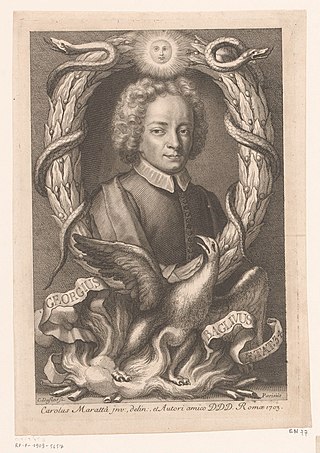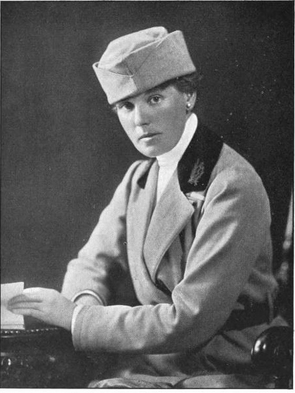
The House of Colonna, also known as Sciarrillo or Sciarra, is an Italian noble family, forming part of the papal nobility. It was powerful in medieval and Renaissance Rome, supplying one pope and many other church and political leaders. The family is notable for its bitter feud with the Orsini family over influence in Rome, until it was stopped by papal bull in 1511. In 1571, the heads of both families married nieces of Pope Sixtus V. Thereafter, historians recorded that "no peace had been concluded between the princes of Christendom, in which they had not been included by name".

Georg Ernst Stahl was a German chemist, physician and philosopher. He was a supporter of vitalism, and until the late 18th century his works on phlogiston were accepted as an explanation for chemical processes.

The history of alternative medicine refers to the history of a group of diverse medical practices that were collectively promoted as "alternative medicine" beginning in the 1970s, to the collection of individual histories of members of that group, or to the history of western medical practices that were labeled "irregular practices" by the western medical establishment. It includes the histories of complementary medicine and of integrative medicine. "Alternative medicine" is a loosely defined and very diverse set of products, practices, and theories that are perceived by its users to have the healing effects of medicine, but do not originate from evidence gathered using the scientific method, are not part of biomedicine, or are contradicted by scientific evidence or established science. "Biomedicine" is that part of medical science that applies principles of anatomy, physics, chemistry, biology, physiology, and other natural sciences to clinical practice, using scientific methods to establish the effectiveness of that practice.

John Elliotson, M.D., M.D.(Oxford, 1821), F.R.C.P.(London, 1822), F.R.S. (1829), professor of the principles and practice of medicine at University College London (1832), senior physician to University College Hospital (1834) — and, in concert with William Collins Engledue M.D., the co-editor of The Zoist.
The Roman Rota, formally the Apostolic Tribunal of the Roman Rota, and anciently the Apostolic Court of Audience, is the highest appellate tribunal of the Catholic Church, with respect to both Latin-rite members and the Eastern-rite members and is the highest ecclesiastical court constituted by the Holy See related to judicial trials conducted in the Catholic Church. An appeal may be had to the pope himself, who is the supreme ecclesiastical judge. The Catholic Church has a complete legal system, which is the oldest in the West still in use. The court is named Rota (wheel) because the judges, called auditors, originally met in a round room to hear cases. The Rota was established in the 13th century.

François Bernier was a French physician and traveller. He was born in Joué-Etiau in Anjou. He stayed for around 12 years in India.

Giorgio Baglivi, born Giorgio Armeno and sometimes anglicized as George Baglivi, was a Croatian-Italian physician and scientist. He made important contributions to clinical education, based on his own medical practice. His De Fibra Motrice advanced the "solidist" theory that the solid parts of organs are more crucial to their good functioning than their fluids, against the traditional belief in four humors. Baglivi, however, advocated against doctors relying on any general theory rather than careful observation. He was "a distinguished physiological researcher fascinated by the nerves, his microscopic studies enabled him to distinguish between smooth and striated muscles and distinct kinds of fibres."

Medical jurisprudence or legal medicine is the branch of science and medicine involving the study and application of scientific and medical knowledge to legal problems, such as inquests, and in the field of law. As modern medicine is a legal creation, regulated by the state, and medicolegal cases involving death, rape, paternity, etc. require a medical practitioner to produce evidence and appear as an expert witness, these two fields have traditionally been interdependent.

Jean-Étienne Dominique Esquirol was a French psychiatrist.

Dame Anne Louise McIlroy, known as Louise McIlroy, was a distinguished and honoured Irish-born British physician, specialising in obstetrics and gynaecology. She was both the first woman to be awarded a Doctor of Medicine (MD) degree and to register as a research student at the University of Glasgow. She was also the first woman medical professor in the United Kingdom.

János Zsámboky or János Zsámboki or János Sámboki, was a Hungarian humanist scholar: physician, philologist and historian.

Honoré Fabri was a French Jesuit theologian, also known as Coningius. He was a mathematician, physicist and controversialist.

Homeopathy is fairly common in some countries while being uncommon in others. In some countries, there are no specific legal regulations concerning the use of homeopathy, while in others, licenses or degrees in conventional medicine from accredited universities are required.

Jean Lemoine, Jean Le Moine, Johannes Monachus was a French canon lawyer, Cardinal, bishop of Arras and papal legate. He served Boniface VIII as representative to Philip IV of France, and founded the Collège du Cardinal Lemoine, in Paris. He is the first canon lawyer to formulate the legal principle of the presumption of innocence.

Charles Arthur Mercier was a British psychiatrist and leading expert on forensic psychiatry and insanity.
Sir Thomas Burnet (1638–1704) was a Scottish physician, known for his appointment to successive British monarchs, and as an author in the tradition of Early Modern learned medicine.

Medical malpractice is a legal cause of action that occurs when a medical or health care professional, through a negligent act or omission, deviates from standards in their profession, thereby causing injury or death to a patient. The negligence might arise from errors in diagnosis, treatment, aftercare or health management.

Rose v Royal College of Physicians, also known as The Rose Case, was a 1703 British landmark court case between the Royal College of Physicians (RCP) and William Rose, a Liveryman of the Society of Apothecaries. Rose had treated a John Seale, who complained about his treatment to the RCP, who brought a successful court action against Rose in 1703. The Society of Apothecaries and Rose successfully appealed against this judgement. However, this did not change medical practice but merely legitimised what apothecaries were doing already and confirmed the "status quo". It did, nevertheless, symbolize the decline in the College's growing legal monopoly over who practises medicine. The case was ultimately seen as not one between a College and one individual, but one between one powerful College against one powerful Society.
Sir Theodore "Robbie" Fortescue Fox was a British physician and medical editor.

Ludovico Settala, also known by his Latin name of Ludovicus Septalius, was an Italian physician during the Renaissance.


















